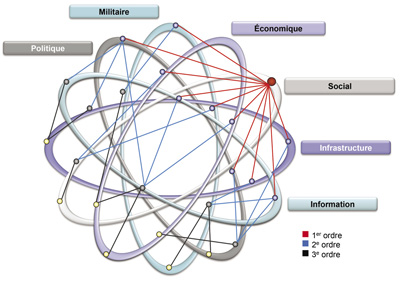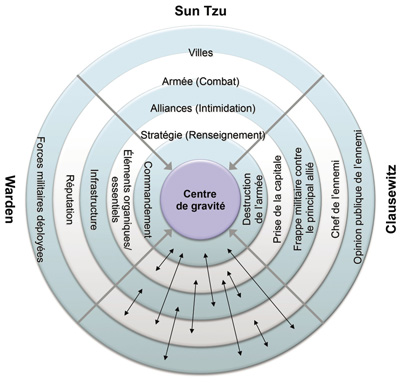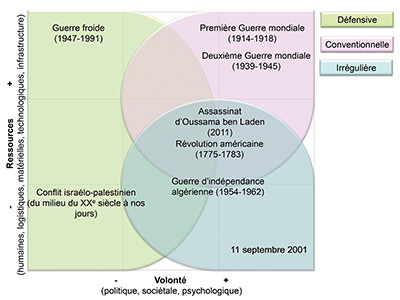Views and Opinions
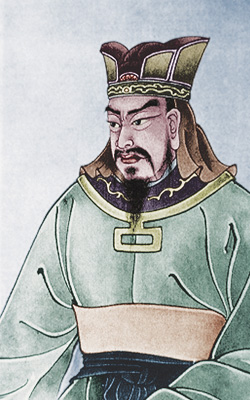
Sun Tzu
544 BC – 496 BC
China
“The supreme art of war is to
subdue the enemy without fighting”
Getty image 103420365 Chinese School, Bridgeman Art Library

Niccolò dei Machiavelli
3 May 1469-21 June 1527
Italy
“No enterprise is more likely to succeed than one concealed
from the enemy until it is time for execution”
ullstein bild/The Granger Collection, NYC 0207848
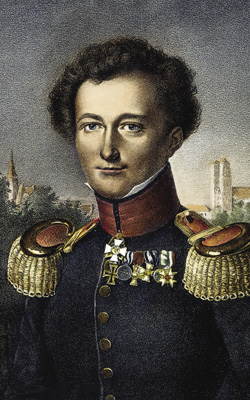
Carl von Clausewitz
1 July 1780-16 November 1831
Prussia
“Pursue one great decisive aim with force and determination”
The Granger Collection, NYC 0046391
Nothing New Under the Sun Tzu: Timeless Principles of the Operational Art of War
by Commander Jacques P. Olivier
For more information on accessing this file, please visit our help page.
Commander Olivier is a naval engineer with over 27 years of military service, currently working as a naval platform systems and strategic change program manager with the Director General Maritime Equipment Program Management (DGMEPM) at National Defence Headquarters in Ottawa.
Introduction
Many authors have professed to understand war and society throughout the ages, with the most celebrated pieces of literature including the crafty Il Principe of Italian political philosopher Nicollo di Machiavelli written in 1513 but published postmortem in 1532; and, of course, the Napoleonic wars grand theories of Prussian-German General Carl Philipp Gottlieb von Clausewitz in his proverbial Vom Kriege, also published postmortem in 1831. Both these scholars of war and others have bearing on the central military treatise of this short article, the timeless The Art of War of Chinese strategist Sun Tzu, written in the Fifth Century BC.
As contemporary military doctrine has now evolved through the transformational theories of the Revolution in Military Affairs (RMA) since the 1970s,1 and flirted with a plethora of epistemological system-of-systems concepts, one must enquire if there has truly been a fundamental change in the nature of the operational art of war over the last two millennia? This brief examination contends not, and will attempt to demonstrate that the principles of war remain robustly anchored in only a few tenets allegedly first recorded by Sun Tzu: to win without fighting; and if fighting one must, avoid strength and attack weaknesses; everything else is subordinate and a means to effectively achieve these canons. To do so, it will be shown that war, the use of violence to impose one’s will, remains a means to achieve political objectives, which necessitates an holistic offensive approach and the selection of the most effective modes of warfare if it is to be victoriously terminated at the lowest possible cost and in the shortest possible time.
This article will first examine the holistic perspective of Sun Tzu compared to other authors, and selected ‘system-of-systems’ theories of RMA. Next, Sun Tzu’s centres of gravity will be elicited, followed by the reasoning behind the proportionality of strength and the types of warfare to use, given the will to fight and the resources available. A common thread throughout the article is the use of intelligence, which yields the ability for deception, and, in turn, surprise.
Holistic Offensive Approach
Clausewitz’ voluminous Vom Kriege highlighted that the shortest way to achieve political objectives is by the destruction of the enemy forces’ centre of gravity in a major decisive battle. Machiavelli’s Il Principe, on the other hand, focused upon domestic and foreign policies, and described how best to acquire, govern, and preserve a state by any means necessary through virtue, power politics, fortune and abilities, and ruthlessness and cruelty. Whereas Clausewitz and Machiavelli tackled very specific aspects of a grand puzzle, Sun Tzu’s The Art of War instead provided a holistic approach to waging war, which not only included the surgical use of force as a last resort, but also a variety of non-military methods, such as diplomatic, political, economic, psychological, and moral means to win without fighting.
Modern reincarnations of Sun Tzu’s holistic offensive strategy abound in the realm of the Revolution in Military Affairs. The RMA is defined as:
Any major change in the nature of warfare brought about by the innovative application of new technologies which, combined with dramatic changes in military doctrine and operational and organizational concepts, fundamentally alters the character and conduct of military operations.2
Let us consider, for instance, the use of ‘system-of-systems’ approaches, such Rapid Decisive Operations (RDO) and Effects-Based Operations (EBO) which were exploited for the planning and conduct of operations combining military and non-military methods during the 1991 Gulf War. Arguing against the dominant view of targeting for destruction, American planners and commanders seemingly adopted instead Sun Tzu’s tenet that: “…generally in war the best policy is to take a state intact; to ruin it is inferior to this.”3 United States Air Force (USAF) Lieutenant Colonel (now retired Lieutenant General) Dave Deptula used RDO and EBO as key doctrinal concepts to achieve strategic effects.4 Notwithstanding the advancement in technologies and methods of application; the nature, the philosophy and the ‘systems’ remain essentially the same as those espoused by Sun Tzu 2400 years ago.
Although categorically rejected by the United States Joint Forces Command in 2008,5 it is germane to explain that the EBO’s system-of-systems analysis (SoSA) was divided into six major systems: political, military, economic, social, infrastructure, and information. Each of these systems was comprised of nodes and links, nodes: the tangible elements such as persons, places, or physical things within a system; and links, the physical, functional, or behavioural relationships between nodes of any systems. The most vulnerable nodes and associated links are targeted for diplomatic, informational, military, and economic (DIME) actions to influence or change the system behaviour and resource capabilities, and thereby to reduce the enemy’s will to fight.6
Figure 1 – System-of-Systems Approach to Warfare
The idea is that activities on one system may have collateral first, second, third, or multiple order effects on other systems, thus potentially collapsing or paralysing the whole system-of-systems without actually engaging in a military conflict. After all, the premise of Sun Tzu’s holistic approach was ultimately to achieve the state’s political goals without fighting and with minimal destruction. “For to win one hundred victories in one hundred battles is not the acme of skill. To subdue the enemy without fighting is the acme of skill.”7
This ancient version of the ‘Whole-of-Government’ approach has been emulated in many shapes and forms in recent decades. Coincidentally, former Prime Minister Paul Martin’s 2005 International Policy Statement8 advocated that the best way for Canada to make a difference in conflict situations was to adopt a “3D” (Defence, Diplomacy and Development) framework.9
Centres of Gravity
Sun Tzu’s holistic offensive strategy was predicated upon his priorities in terms of centre of gravity.10 In order of relative merit, the priority was to first attack the enemy’s plans and strategies at their inception, “…this means winning by intelligence.” Second was to disrupt and dissolve alliances about to be consummated, “…this means winning by intimidation.” Third, if non-violent methods failed, the strategy was to attack the enemy’s army, “…this means winning by fighting.” Lastly, when there was absolutely no other alternative, it was to attack the cities: “…this is the lowest form of attack.”
Resorting to the use of force did not, however, preclude the continued and concurrent use of non-violent methods, such as peaceful diplomacy and economic sanctions. Sun Tzu reiterated that “…those skilled in war subdue the enemy’s army without battle. They capture his cities without assaulting them and overthrow his state without protracted operations.”11 To be successful, this offensive strategy ought to be planned and executed with extensive use of intelligence, deception, surprise, speed, and the swift use of direct and indirect manoeuvres at all levels, from political to tactical.
An interesting re-creation borrowing from Sun Tzu’s centres of gravity priorities is that of retired USAF Colonel John A. Warden’s theory of strategic attack, based upon five levels of system attributes, namely, leadership; organic/system essentials; infrastructure; population; and fielded military forces. One will note that leadership, organic/systems essentials, and infrastructure are explicitly covered by Sun Tzu in his first chapter on Estimates, wherein he speaks of moral influence, command, and doctrine. Great importance is indeed placed upon appraising these fundamental factors, as those who master them win, while those who do not are defeated.
By moral influence I mean that which causes the people to be in harmony with their leaders [leadership], so that they will accompany them in life and unto death without fear of mortal peril…By command [leadership] I mean the general’s qualities of wisdom, sincerity, humanity, courage, and strictness…By doctrine I mean organization, control, assignment of appropriate ranks to officers [chain of command], and the provision of principal items used by the army [logistics, i.e. organic essentials and infrastructure].12
Both Sun Tzu and Warden’s theories are compared in Figure 2, along with the contrasting centres of gravity of Clausewitz.13 Figure 2 reveals discrepancies, but more importantly similarities, in that, contrary to Clausewitz, destruction of the enemy’s army and cities is not a primary strategic goal. Instead, the focus is to force capitulation by applying pressure on DIME.14 Of note, both Sun Tzu and Clausewitz saw the need to sever the enemy’s alliances to isolate and weaken his position.
Figure 2 – Centres of Gravity
It might be construed that Sun Tzu’s centres of gravity and their priorities remain the most relevant nowadays. One only has to examine the United Nations’ (UN) charter, which advocates the peaceful resolution of conflict by diplomatic solutions first, economic sanctions next, and the use of force as a last resort while protecting the population and providing humanitarian aid.15
Proportionality of Strength
When non-violent methods failed and the situation escalated to the use of military forces, Sun Tzu established proportionality of strength rules which still today profoundly resonate in the art of operational warfare. The only caveat is that “strength” should mean resources, such as human capital (troops), as well as logistical resources, such as technology, energy, material, finance, and infrastructure. Nevertheless, Sun Tzu argued metaphorically that when one’s strength is ten times that of the enemy, one should attack him by surrounding him; assuming the generals are equal in intelligence and bravery, and the soldiers equal in competence and cohesion. When one’s strength is five times that of the enemy, one should pursue a direct assault with one-third of his forces; probe for weaknesses, and strike by surprise with the remaining two-thirds. When two-to-one, one should use part of his forces for a direct assault to a critical point the enemy is surely to defend; while attacking by surprise somewhere else, confusing the enemy, and forcing him to divide his forces.16,17
Sun Tzu refers here to the pivotal use of the cheng and ch’i. On this point, he states: “Generally, in battle, use the normal [cheng] force to engage; use the extraordinary [ch’i] to win.”18 The cheng (normal, orthodox, direct) fixes, attracts or distracts the enemy, while the ch’i (extraordinary, unorthodox, indirect) acts decisively when and where the blows are not anticipated, defeating the enemy.19
Wholeheartedly embracing these principles during the Second World War, the German tacticians fashioned the blitzkrieg to defeat opponents using the nebenpunkt (supporting point – cheng) and schwerpunkt (focus point - ch’i) manoeuvre warfare. The blitzkrieg philosophy used intelligence, speed, and agility to generate ambiguity, realize deception, exploit weaknesses, and focus violence effectively.20
A more recent example is Operation Desert Storm in 1991, whereby the Coalition forces dominated the air, but the ground forces were more evenly matched. By controlling intelligence, General H. Norman Schwartzkopf threatened an amphibious assault in the east (cheng), but executed an armoured attack on the Iraqi army in the west (ch’i), thus winning a decisive victory with minimal casualties.21 The essence of Schwartzkopf’s deception was to appear at places to which the enemy must hasten; but to move swiftly where he did not expect.22 The strategies and successes of such commanders as Alexander, Hannibal, Belisarius, Genghis Khan, and Tamerlane also used the cheng and ch’i with consistency.23
Sun Tzu further said that if one’s strength is equal to or less than that of the enemy, depending upon one’s abilities and motivation, one should swiftly elude the enemy, execute a stealthy retreat, strengthen one’s defence, and patiently probe for weakness and vulnerability. Then, the general sets up ruses, raids, ambushes, and surprise attacks to confuse, harass, exhaust, and coerce the enemy: “This is called superiority by intelligence. It is not a matter of clash of armies.”24 One should see here the hallmarks of insurgency and guerrilla warfare, and even perhaps the use of terrorist action which Sun Tzu only suggested as a dishonourable last resort.
Insurgency, and, by extension, guerrilla activities, can be defined as “…a popular movement that seeks to overthrow the status quo through subversion, political activity, insurrection, armed conflict and terrorism.”25 In turn, terrorism can be defined as “…politically motivated violence against non-combatants with the intention to coerce through fear.”26 It might be that guerrilla warfare is simply the application of Sun Tzu’s tactical guidance when disadvantaged by the proportionality of strength and resources.
Types of Warfare
In light of Sun Tzu‘s priorities in centres of gravity (Figure 2) and his use of resources, given a proportionality of strength, it should now be realised that Sun Tzu had already deciphered what many are still attempting to comprehend today. What is irregular warfare, and when to use it? Some may argue that irregular warfare can have no fixed character, as its irregularity is determined by specific historical and cultural circumstances, and is definable only with reference to its opposite.27 But Sun Tzu had already captured the essence of this proposition with his cheng and ch’i, and therefore said: “…when I have won a victory I do not repeat my tactics but respond to circumstances in an infinite variety of ways…and as water has no constant form, there are in war no constant conditions.”28
What Sun Tzu perhaps truly alluded to regarding the types of warfare to use is primarily a matter of will and resources. By will, it means primarily the ‘political’ will to fight which is fed from the population, societal, and cultural norms, and psychological predisposition. By resources, it means all the available assets and methods previously named, including alliances, DIME, and, of course, intelligence. If a nation or non-state actors have will and resources, the tendency will go towards conventional confrontational warfare (as defined by that time); if there is will but fewer resources, the tendency will go towards irregular warfare, which includes guerrilla warfare. Otherwise, the situation enters the realm of defensive warfare, which resembles survival with low resources, and a ‘waiting game’ with abundant resources.
Even in the defensive mode, one is not actually passive, but always probing for intelligence, again, for the purpose of avoiding strength and attack weaknesses. Moreover, it is a mistake to attempt to discern too much between regular and irregular warfare, as most successful campaigns will use methods ranging within the regular-irregular spectrum. Sun Tzu said: “In battle, there are only the normal and extraordinary forces, but their combinations are limitless; none can comprehend them all.”29
Figure 3 illustrates the relationship between these types of warfare with a few examples. It should be noted that this graph is temporal in that a given conflict will likely shift over time as will is affected and resources are expended or acquired. Note also that the conflict will often be seen from the view of one belligerent over others, likely, the one history deems to be victorious.
Figure 3 – Types of Warfare given Will and Resources
At opposing ends of the spectrum in Figure 3 (and 2) are the Cold War and the 9/11 attacks. The Cold War was won by the United States over the Soviet Union by applying pressure upon the military aspect of DIME with the proliferation of conventional and nuclear weapons, while exhausting the economic element with such technological competitions as the Space Race at a time when the nation was already suffering economic stagnation. The fear of escalating to Mutually Assured Destruction (MAD) precluded any direct conventional or indirect irregular conflicts. This situation constituted winning without fighting. As for the 9/11 terrorist attack, disproportionally disadvantaged with the DIME elements, al-Qaeda used the enemy’s resources as a weapon and attacked the only targets they could kinetically: the cities, the infrastructures, and the population. Although perhaps morally reprehensible from a Western viewpoint, 9/11 was a meticulously well executed military plan with only 19 al-Qaeda casualties inflicting first order infrastructure destruction and mass casualties; and second and third order economic perturbation and apprehension to the heart of a hegemony. This approach consisted of avoiding strength and attacking weaknesses.
Controversial as it may be, the U.S. killing of Osama bin Laden, the founder and head of the Islamist militant group al-Qaeda, in Pakistan on 02 May 2011, by Navy SEALs of the U.S. Naval Special Warfare Development Group in a Central Intelligence Agency co-led operation is undoubtedly a superb execution of the operational art of war, wherein political will and resources were effectively exploited to fragment the enemy’s leadership.
Conclusion
The principles of war remain robustly anchored in the tenets espoused by Sun Tzu’ The Art of War treatise written 2400 years ago. Specifically, to win without fighting; and if fighting one must, avoid strength and attack weaknesses; everything else is subordinate and a means to effectively achieve these canons. War necessitates a holistic offensive approach if it is to be victoriously terminated at the lowest possible cost, and in the shortest possible time. Moreover, the selection of the most effective modes of warfare must take into account the proportionality of strength, the will to fight, and the resources available. A common thread is that the use of intelligence, deception, and surprise is instrumental.
Despite the blank pages of harmony in the human existence since the Stone Age, it is true that “…our collective memory is [too often] measured in terms of crisis and calamities, harrowing injustices, and terrifying episodes of brutality inflicted on each other.”30 It follows then, as Sun Tzu declared, that “…war is a matter of vital importance to the state; the province of life or death; the road to survival and ruin. It is mandatory that it be thoroughly studied.”31 If human nature is indeed materialist to the core, self-serving, utilitarian, and pleasure seeking,32 then war theories will continue to be studied for many generations.
Notes
- B. J. C. McKercher and Michael A. Hennessy, The Operational Art: Developments in the Theories of War (Westport, CT: Praeger Publishers, 1996), p. 173.
- Jeffrey McKitrick et al., “The Revolution in Military Affairs,” in Battlefield of the Future: 21st Century Warfare Issues, Air War College Studies in National Security no. 3, Barry R. Schneider and Lawrence E. Grinter (eds.) (Alabama: Air University Press, 1995), at http://www.airpower.maxwell.af.mil/airchronicles/battle/chp3.html (accessed 10 January 2011).
- Mark McNeilly, Sun Tzu and the Art of Modern Warfare (New York, NY: Oxford University Press, 2001), p. 226.
- David A. Deptula, Effects-Based Operations: Change in the Nature of Warfare (Arlington, VA: Aerospace Education Foundation, 2001), p. 40, at http://www.aef.org/pub/psbook.pdf (accessed 10 January 2011).
- James N. Mattis, “USJFCOM Commander’s Guidance for Effects-Based Operations,” in Parameters 38 (Autumn 2008), pp. 18-25, at http://www.carlisle.army.mil/usawc/Parameters/Articles/08autumn/mattis.pdf (accessed 10 January 2011).
- Milan Vego, “Systems Versus Classical Approach to Warfare,” in Joint Force Quarterly 52, No. 1 (2009), pp. 41-42.
- McNeilly, p. 226.
- Canada, Canada’s International Policy Statement 2005 (Ottawa: Government of Canada, 2005), at www.dfait-maeci.gc.ca/cip-pic/ips/overview-en.asp (accessed 10 January 2011).
- The 3D underlying philosophy was that the Department of National Defence (DND), Foreign Affairs and International Trade Canada (DFAIT), and the Canadian International Development Agency (CIDA) had to work jointly to execute a common strategy. See Taylor Owen and Patrick Travers, “3D Vision: Can Canada Reconcile its Defence, Diplomacy, and Development Objectives in Afghanistan?” in The Walrus, July 2007, at http://www.walrusmagazine.com/print/2007.07.Afghanistan-and-Canada/ (accessed 10 January 2011).
- McNeilly, pp. 226-227.
- Ibid., p. 228.
- Ibid., pp. 214-215.
- Michael I. Handel, Masters of War: Classical Strategic Thought, 3rd Edition (Portland, OR: Frank Cass Publishers, 2001), p. 61.
- John A. Warden, “Air Theory for the Twenty-First Century,” in Battlefield of the Future: 21st Century Warfare Issues, Air War College Studies in National Security No. 3, Barry R. Schneider and Lawrence E. Grinter (eds.) (Montgomery, AB: Air University Press, 1995), at http://www.airpower.maxwell.af.mil/airchronicles/battle/chp4.html (accessed 10 January 2011).
- United Nations, Charter of the United Nations (San Francisco, CA: United Nations, 1945), at http://www.un.org/en/documents/charter/ (accessed 10 January 2011).
- Thomas Cleary, The Art of War: Sun Tzu, (Boston, MA: Shambhala Publications, 1988), pp. 74-75.
- McNeilly, pp. 228-229.
- Ibid., p. 239.
- Ibid.
- Grant T. Hammond, The Mind of War: John Boyd and American Security (Washington: Smithsonian Institution Press, 2001), p. 143.
- McNeilly, pp. 6-7.
- Ibid., p. 244.
- Hammond, p.125.
- Cleary, p. 76.
- David J. Kilcullen, “Countering Global Insurgency,” in Journal of Strategic Studies 28, No. 4 (August 2005), p. 603.
- Ibid.
- Colin S. Gray, “Irregular Warfare: One Nature, Many Characters,” in Strategic Studies Quarterly 1, No. 2 (Winter 2007), p. 43.
- “Now an army may be just likened to water, for just as flowing water avoids the heights and hastens to the lowlands, so an army avoids strength and strikes weakness. And as water shapes its flow in accordance with the ground, so an army manages victory in accordance with the situation of the enemy.” See McNeilly, p. 248.
- “For these two forces are mutually reproductive; their interactions as endless as that of interlocked rings. Who can determine where one ends and the other begins?” See Ibid., p. 240
- Jeremy Rifkin, The Emphatic Civilization: The Race to Global Consciousness in a World in Crisis (New York, NY: Jeremy P. Tarcher/Penguin Group, 2009), p. 10.
- McNeilly, p. 213.
- Rifkin, p.42.




